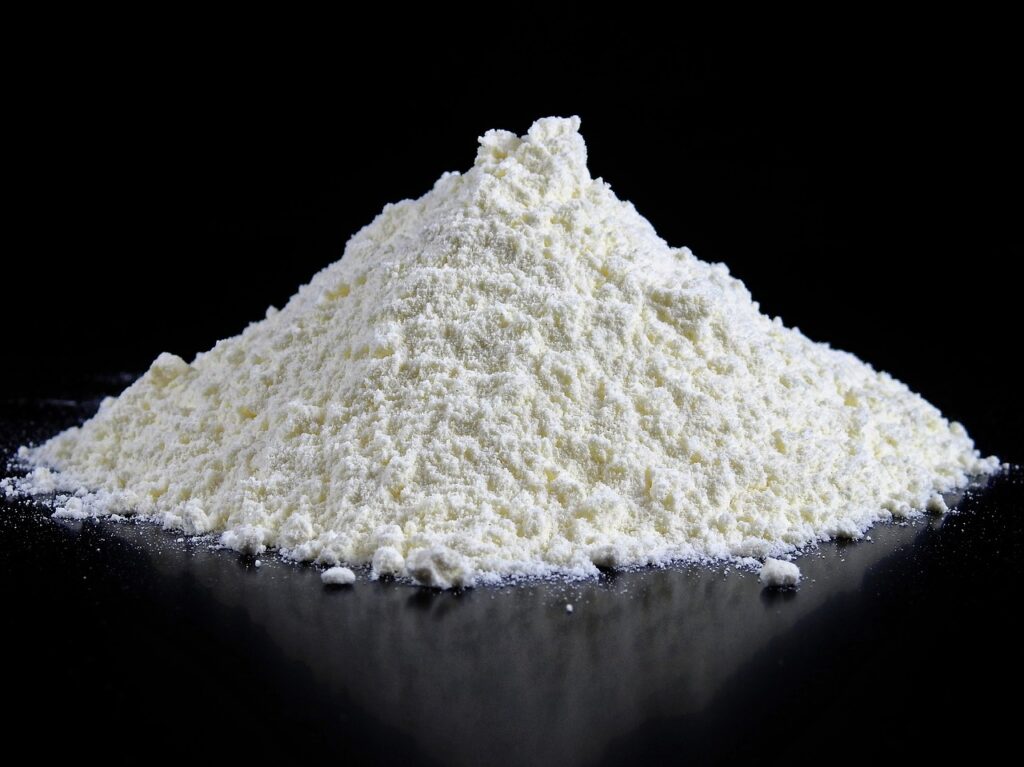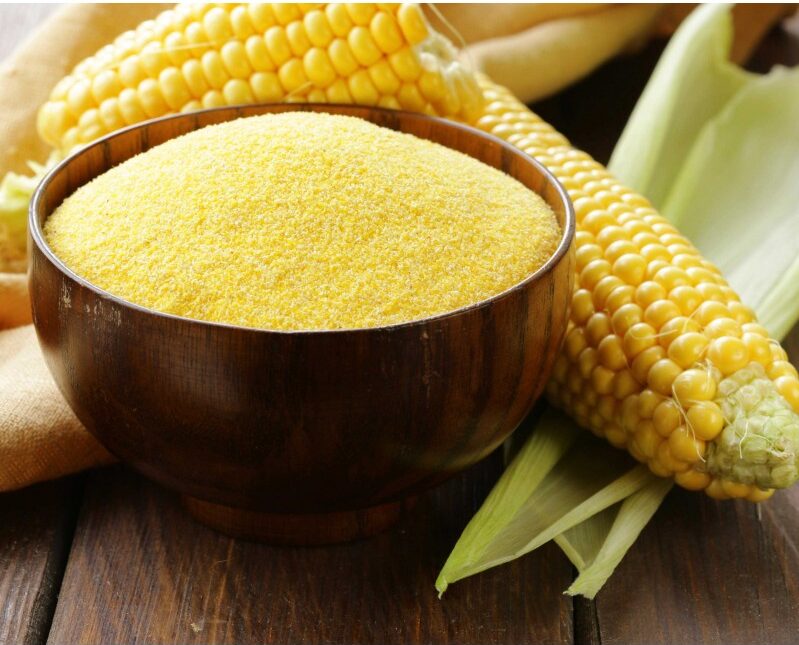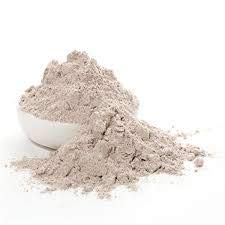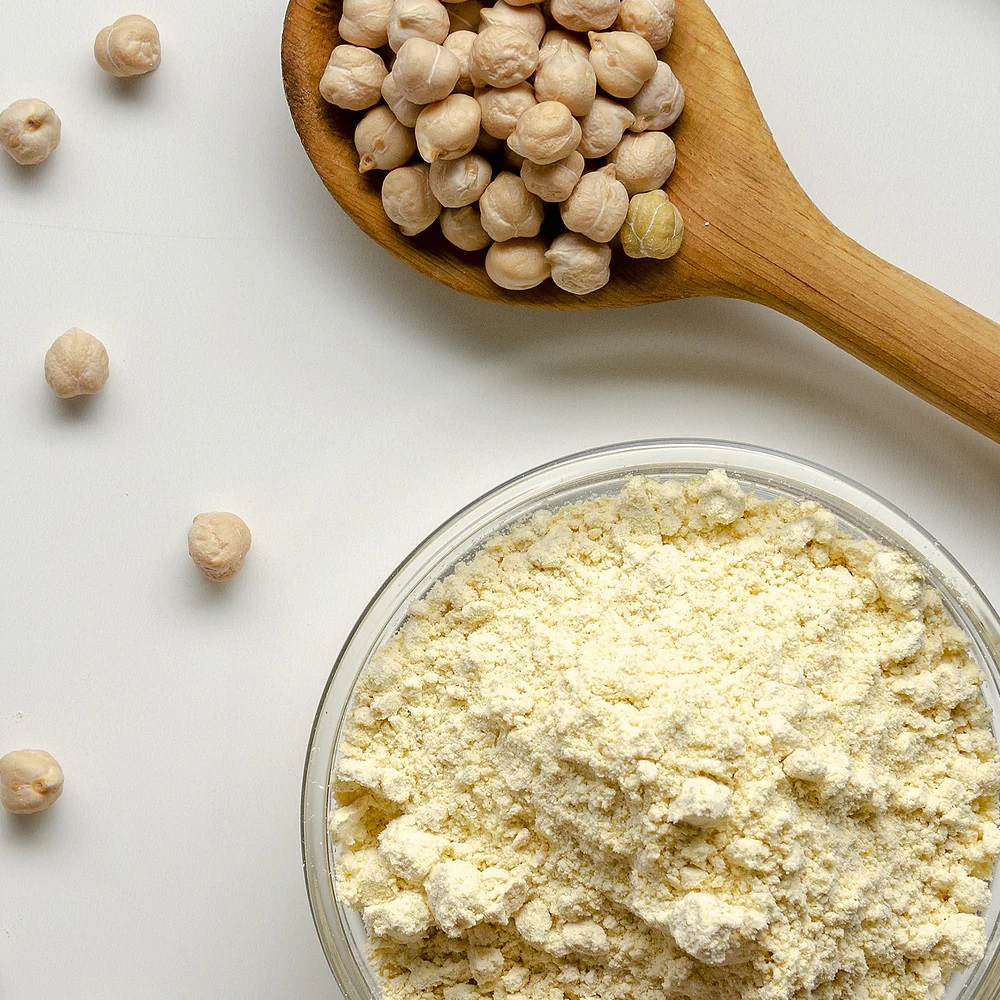. Wheat Flour .

DESCRIPTION
This flour is the most widely used of all flours. It comes from the finely ground part of the wheat kernel called the endosperm, which gets separated from the bran and germ during the milling process. It is made from a combination of hard and soft wheat, hence the term all-purpose. This type of flour can be used universally for a wide range of baked products – yeast breads, cakes, cookies and pastries. All-purpose flour has iron, and four B-vitamins (thiamin, niacin, riboflavin and folic acid) added in amounts equal to or exceeding what is present in whole wheat flour. Virtually all white flour sold in the United States is enriched (over 95%). There is no change in taste, texture, color, baking quality or caloric value of enriched flour.
. Maize Flour .


DESCRIPTION
Maize Flour or Makka Atta is made by milling dried corn kernels very fine until it becomes flour. As it comes from corn, it is completely gluten-free. Therefore, it can substitute wheat flour. Corn is good for Eye Health because it contains the carotenoids lutein and zeaxanthin. Furthermore, it is a great energy source. It gets digested at a slow pace and therefore gives you energy steadily. It has a distinctive yellow colour and should not be confused with cornflour. It is a good source of protein as well as magnesium, phosphorous, riboflavin, niacin, vitamin B6, vitamin A, vitamin E, betacarotene and monounsaturated fatty acids. Maize Flour is a popular ingredient in gluten free cooking and is versatile enough to use for both sweet and savoury dishes, giving a distinctive and appealing flavour.
. Finger millet flour .


DESCRIPTION
Finger millet flour is a form of flour made from finger millet, which is a pseudo-grain. Generally, finger millet flour can be used to make bread, beer, cereal, and more. Nowadays, most people use finger millet flour with other gluten-free flour like oat flour and tapioca starch to create gluten-free baked goods.
USES
Finger millet flour has a variety of uses, and finger millet flour’s main use will depend on the country.
For instance, countries in Southeast Asia and Africa have been using finger millet flour to make cereal, beer, and bread for thousands of years
Moreover, many people around the world have been using finger millet flour as a gluten-free alternative to flour.
For example, finger millet flour has a mild flavor and neutral texture similar to plain flour, making finger millet flour a good substitute for gluten-free baking.
However, most people suggest mixing finger millet flour with tapioca starch or oat flour if you want to bake with finger millet flour because a combination of flours will enhance the texture of your dishes.
. Sorghum flour .


DESCRIPTION
Sorghum flour is light or beige in colour with a mild sweet flavour. It is an incredibly versatile baking flour due to a non-assertive vanilla scented flavour and soft texture. Sorghum flour is finely ground from the whole grain kernel of sorghum. This is an ancient cereal grain common throughout Australasia and Africa. Its roots can be traced back 5000 years and is the fifth most important cereal crop in the world.
USES
- breakfast porridge
- thickening stews
- the production of alcoholic drinks
- Sweet sorghum syrup – a common ingredient in the southern states of America but its use has been swapped out in more recent recipes for the more economical, but less flavourful, corn syrup.
- Jowar roti – an Indian flatbread
. Gram Flour .


DESCRIPTION
Gram flour is a finely ground powder made from cooked, roasted garbanzo beans. Known also as chickpea flour, it is pale yellow and has a silky texture. This flour is widely used as an ingredient in Indian cuisine, as well as in some Asian, Middle Eastern, and European dishes. Chickpeas (Cicer arietinum) grow on small bushes that produce feathery foliage and plump, oval pea pods. There are two types: desi, which are small and dark with rugged skin, and kabuli, which are larger and lighter with smooth skin. Historically, these legumes were one of the earliest cultivated crops. India is the world’s largest producer. Much like chickpeas themselves, gram flour is relatively high in both protein and carbohydrates. It is also rich in B vitamins, calcium, and other minerals such as iron, phosphorous, and magnesium. As a gluten-free product, it is especially favored by those with food allergies and special dietary needs.